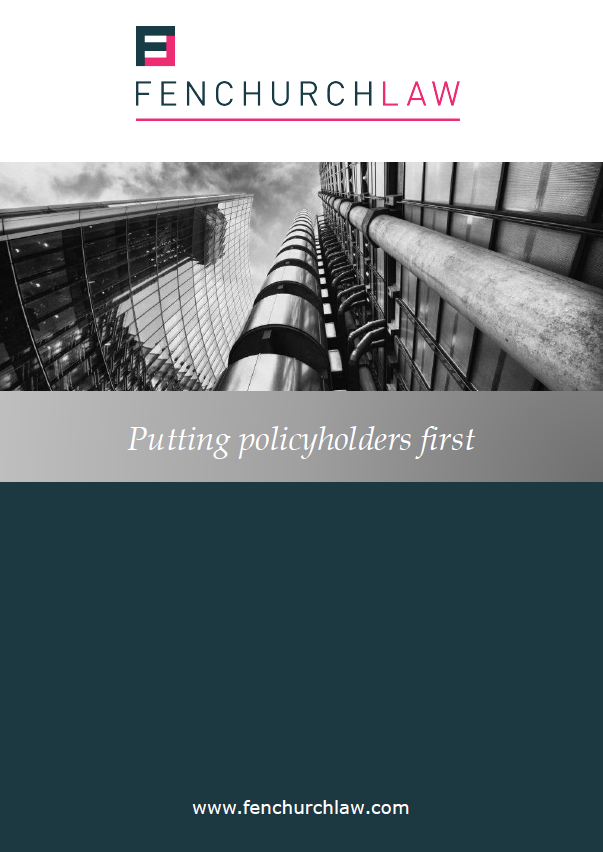
Clarendon v Zurich: Proposal Insolvency Questions Narrowly Construed
In a judgment handed down on 13 February 2025, the High Court upheld an application to strike out parts of an insurer’s Defence, in a coverage dispute arising from £8 million fire losses at a dental practice in Leeds. The decision is welcome news for policyholders and brokers, supporting a narrow approach to interpretation of insurer questions on insolvency of corporate entities related to the proposer, in statements of fact prior to inception of the policy.
Fenchurch Law act for the claimants, Clarendon Dental Spa LLP (the ‘LLP’) and Clarendon Dental Spa (Leeds) Limited (‘Clarendon’), in their action against Zurich and Aviva, following insurers’ refusal to indemnify property damage and business interruption losses arising from a catastrophic fire in June 2021. Following commencement of proceedings, settlement with Aviva was agreed on commercial terms, and trial of the claim against Zurich is listed for hearing in May 2025.
Duty of Fair Presentation
Zurich alleged that Clarendon had breached its duty of fair presentation in failing to disclose the insolvency of two companies (‘PDS’ and ‘JHP’) that shared a common director with Clarendon and the LLP. These entities were former partners of the LLP and resigned in 2014, before entering into creditors’ voluntary liquidation, following a business restructuring which led to the formation of Clarendon. The LLP continued to own the freehold of the premises. Prior to 2006, the freehold was owned by Back-to-back Investments Ltd (‘BTB’), a company in which the dentist owner of Clarendon was a director. BTB entered insolvent liquidation in December 2009.
As part of the insurance renewal process, a statement of facts was provided to Zurich, including an ‘Insolvency Question’: “Have you or any partners, directors or family members involved in the business … Been declared bankrupt or insolvent, or been disqualified from being a company director?”. Clarendon answered ‘No’. A proposal form was given to Aviva, including a declaration that “Neither You or Your directors or partners involved with The Business or any other company or business have … in the last ten years been declared bankrupt or insolvent or been the subject of bankruptcy or insolvency proceedings or been disqualified as a company director”.
Under section 3 of the Insurance Act 2015, an insured is required to make a fair presentation of the risk, including disclosure of every material circumstance that the insured knows or ought to know, ensuring that every material representation as to a matter of fact is substantially correct. Disclosure is not required of a circumstance as to which the insurer waives information (section 3(3)(c)).
Zurich’s Defence stated that Clarendon breached this duty by incorrectly answering the Insolvency Question and failing to disclose the liquidations. Clarendon argued that on its true construction, the subjects of the Insolvency Question were limited to Clarendon and its current directors only (and not other corporate entities that a partner/director of Clarendon had previously been involved with), so the answer provided was correct. The insurers advanced a broader interpretation covering any partner in any partnership, and any director of any company, that is or was involved in Clarendon’s business as a dental practice, including the LLP as owner of the freehold and the former operator of the dental practice prior to restructuring.
Contract Interpretation and Waiver
Applying the Supreme Court decision in Wood v Capita Insurance [2017], the Court held that a reasonable person would objectively understand the Insolvency Question as relating only to insolvencies of current partners or directors of the policyholder, and not former partners or members of the LLP.
A special rule applies where a question asked by an insurer is ambiguous. As explained by Snowden J in Ristorante v Zurich [2021]: when the court is interpreting questions posed by insurers, rather than a negotiated contract term, any genuine ambiguity is resolved in favour of the applicant. If there are two rival constructions, both of which are objectively reasonable, the insurer cannot impugn as misrepresentation an answer which a reasonable person would not consider to be false.
The questions were contained in standard form documents issued to policyholders, hence the reference to “partners, directors or family members”, used disjunctively to cover the various possibilities that a policyholder is a partnership, a company, or a sole trader. The wording should naturally be read as referring to current partners and directors, at the date of the question, not to former ones.
The Court also noted the practical difficulties that would be faced in answering the Insolvency Question, if it meant any entity ‘involved’ with the business, as alleged by Zurich. There would need to be an inquiry into the circumstances not only of the policyholder’s own former partners or directors, but also those of predecessor owners or operators of the business, and evaluation of whether any potentially relevant person was sufficiently involved to require investigation – placing an unrealistic and unnecessary burden on policyholders to determine those ‘materially involved’.
It was therefore held that Clarendon answered the questions correctly but even if they had not, they were at best ambiguous and that ambiguity would be interpreted in favour of the policyholders. Further, Zurich and Aviva waived any right to disclosure of the fact of the liquidations, by asking the insolvency questions in the terms presented. The Court therefore agreed to strike out parts of Zurich’s Defence, in relation to alleged material non-disclosures on insolvency.
Implications
The case serves as a timely reminder on the need for clarity in proposal form questions and answers, to avoid disputes. Insurers should ask carefully worded enquiries to sufficiently investigate at the outset, and any attempt to re-write or extend the scope of such questions at the claims stage should be refused.
Read the full judgment here.
Authors:
Other news
Fenchurch Law strengthens coverage dispute team with Wilkes appointment
11 December 2025
Fenchurch Law, the leading international law firm for insurance policyholders and brokers, has appointed renowned…
You may also be interested in:
Archives
Categories
- Legislation
- Financial & Professional Risks
- Case Law
- Professional Risks
- Press Release
- Uncategorized
- The Good, the Bad and the Ugly
- Fenchurch Law Webinars
- Stonegate
- Newsletter
- Events
- Webinars
- Comparing German and English Insurance Law – A Series
- Construction Risks
- Operations
- Business Development
- Construction & Property Risks
- News
- International Risks



